Ever yanked out too much while waxing your brows and stared at the mirror in horror? You’re not alone. A lot of people end up with patchy, uneven eyebrows after a too-aggressive waxing session - especially when they’re trying to keep up with trends or fix a bad DIY job. The real question isn’t just how long it takes for them to grow back - it’s whether they’ll ever look the same again.
Why Overplucked Brows Don’t Grow Back Fast
Eyebrow hair grows slower than scalp hair. While your head hair might grow half an inch a month, eyebrow hairs crawl at about 0.14 to 0.16 millimeters per day. That means you’re looking at roughly 1 to 2 millimeters of growth per week. If you’ve plucked out the entire tail of your brow or cleared out the arch, you’re not just waiting for hair to appear - you’re waiting for follicles to wake up. Here’s the catch: plucking doesn’t just remove the hair. It yanks the hair out from the root, which can damage the follicle over time. If you’ve been overplucking for years - especially with tweezers or hot wax - you might have caused mini-traumas to the follicles. Some may go dormant. Others may stop producing hair altogether. That’s why some people never fully recover their natural brow shape, even after months of waiting.The Timeline: What to Expect Month by Month
There’s no magic number, but here’s what most people experience if they stop plucking and let nature take over:- Week 1-2: Nothing visible. The follicles are in resting mode (telogen phase). You might see faint fuzz, but it’s too short to notice.
- Week 3-4: First signs of growth - fine, light hairs start poking through. They’re often patchy and uneven. This is normal.
- Month 2: Hair becomes more noticeable. You’ll start to see the natural arch and tail beginning to return. Growth is still slow and inconsistent.
- Month 3-4: Most people see significant improvement. Hair is thicker, darker, and fills in gaps. The shape starts to come back, but it may still look uneven.
- Month 5-6: Full recovery for many. If follicles weren’t permanently damaged, brows should look natural again. Some people need up to 8 months if the damage was severe.
That’s six months of patience. No quick fixes. No serums that magically regrow hair overnight. Real regrowth takes time - and consistent care.
What Slows Down Regrowth (And How to Fix It)
Not everyone recovers at the same rate. These common mistakes can delay or even stop regrowth:- Continuing to tweeze: Even one stray hair pulled out every few days resets the clock. You can’t grow back what you keep yanking.
- Using harsh products: Retinoids, acne treatments, or strong exfoliants near the brow area can irritate follicles and slow growth.
- Poor nutrition: Hair needs protein, biotin, zinc, and iron. If you’re cutting calories or avoiding eggs, nuts, or leafy greens, your brows suffer.
- Stress: High cortisol levels can push hair follicles into resting mode. If you’ve been under pressure lately, your brows might be reacting.
Fixing this isn’t about buying expensive serums. It’s about giving your brows space to heal. Stop tweezing. Avoid rubbing or scrubbing the area. Eat more eggs, spinach, salmon, and almonds. Drink water. Sleep well. These aren’t fancy tips - they’re basic body care.
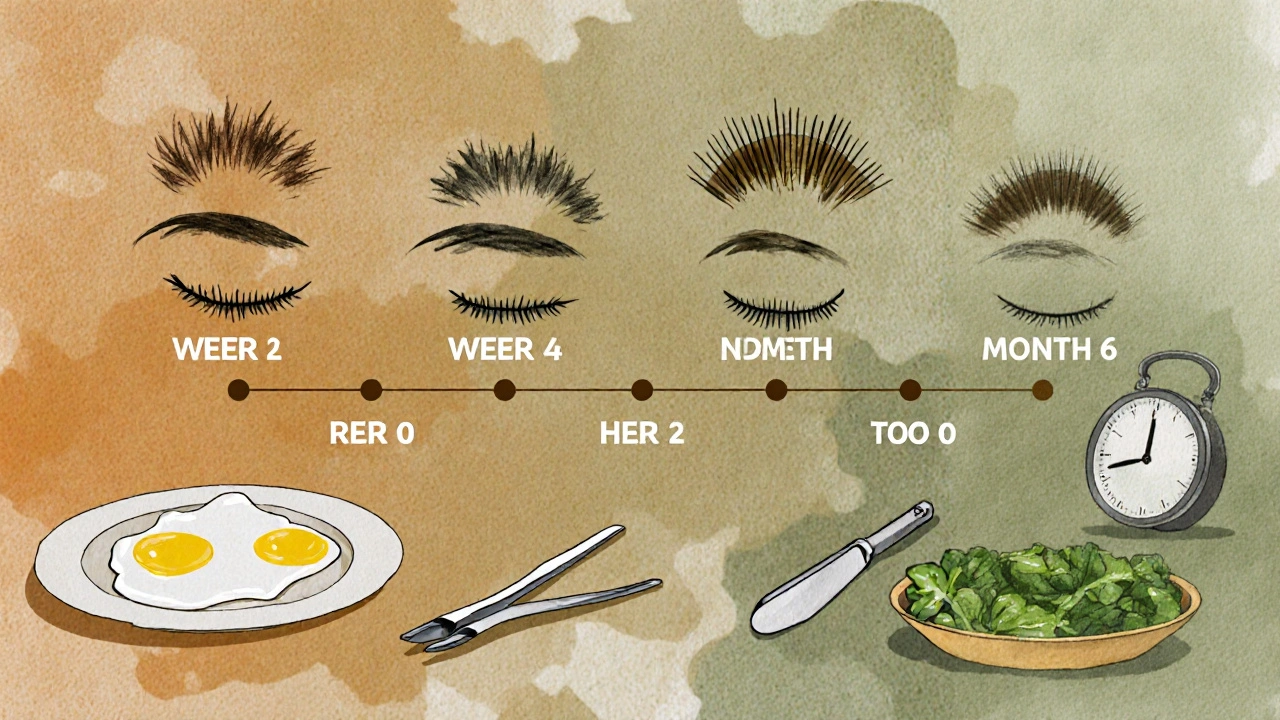
Do Brow Serums Actually Work?
You’ve seen the ads: “Regrow your brows in 14 days!” Spoiler: they don’t. Not really. Some serums contain ingredients like bimatoprost (the same compound in Latisse, originally for glaucoma) or peptides that may slightly boost growth. But here’s the truth: if your follicles are dead, no serum will bring them back. If they’re just sleepy, a serum might shave off a couple of weeks - but not months. Real studies (like one published in the Journal of the American Academy of Dermatology) show that bimatoprost can increase brow density in about 60% of users after 16 weeks. But results vary. And if you stop using it, the hair often falls out again. Bottom line: Serums are optional. Good habits are mandatory.What to Do While You Wait
Waiting six months is hard. You don’t want to look like you’ve lost your brows entirely. Here’s what works in the meantime:- Pencil or powder: Use a light hand. Pick a shade one tone lighter than your natural brow. Soft, feathery strokes mimic real hairs.
- Brow gel: A clear or tinted gel holds existing hairs in place and gives the illusion of fullness.
- Microblading or microshading: If you’re desperate and have the budget, consider a professional. But only go to a licensed artist. Bad microblading can scar your skin and make future regrowth look worse.
- Don’t wax again: Stick to trimming. Use small scissors to neaten stray hairs without touching the sparse areas.
Remember: temporary fixes are fine. But they’re not replacements for letting your brows heal.
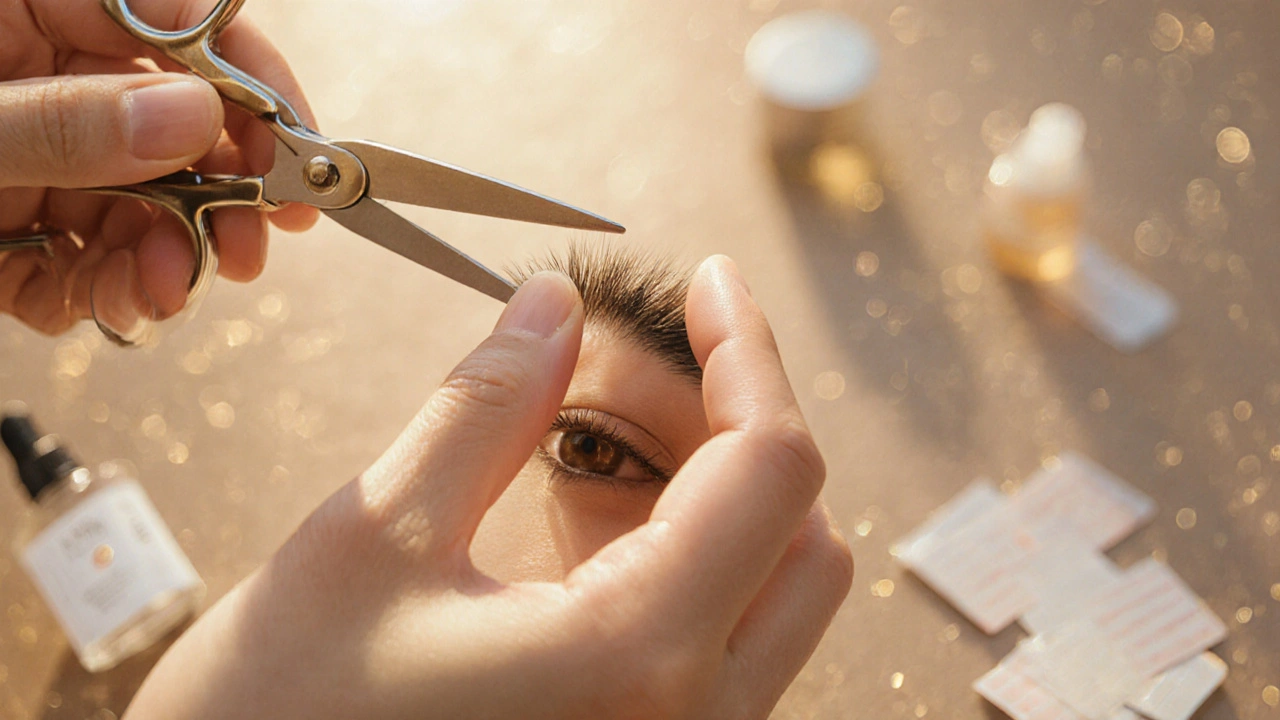
When to See a Dermatologist
If after 8 months you still see no growth - or if your skin is red, flaky, or scarred in the brow area - it’s time to see a dermatologist. You might have:- Follicular scarring
- Autoimmune conditions like alopecia areata
- Chronic inflammation from over-waxing or chemical burns
A dermatologist can do a dermoscopy to check if follicles are still alive. They might prescribe topical minoxidil or corticosteroids. In rare cases, hair transplants are an option - but that’s extreme.
Preventing This From Happening Again
The best way to fix overplucked brows is to never overpluck again.- Go to a professional who knows brow anatomy - not someone who just follows Instagram trends.
- Ask for a “natural shape” consultation. Real pros map your brow based on your bone structure, not the latest filter.
- Only tweeze stray hairs that grow outside your natural outline. Never reshape from scratch.
- Wax every 4-6 weeks, not every 2. Over-waxing stresses the skin and follicles.
- Keep a photo of your brows before any major waxing. Use it as a reference when they start growing back.
Your eyebrows are part of your face’s expression. They frame your eyes, show emotion, and even affect how people perceive your mood. Don’t treat them like a blank canvas.
Can eyebrows grow back after years of overplucking?
Yes - but not always fully. If follicles are still alive, hair can return within 6 to 8 months with no further plucking. If you’ve damaged the follicles with years of aggressive waxing or tweezing, some areas may never regrow. Dermatologists can check follicle health with a dermoscope to determine if regrowth is still possible.
Does coconut oil help eyebrows grow back?
Coconut oil can moisturize the skin and reduce irritation, which helps create a better environment for growth. But it doesn’t stimulate hair follicles or speed up regrowth. It’s a supportive tool, not a solution. Use it if you like the way it feels, but don’t expect miracles.
Why do my eyebrows grow back patchy?
Patchy regrowth happens because not all follicles wake up at the same time. Some were more damaged than others. Others are still in resting phase. It’s normal to see uneven growth for the first 3-4 months. Give it time - and don’t tweeze the short hairs. They’ll even out.
Can waxing permanently damage eyebrow hair?
Yes. Repeated waxing, especially if done too often or with poor technique, can cause inflammation, scarring, or follicle destruction. Once a follicle dies, the hair won’t grow back. That’s why professionals recommend waxing only every 4-6 weeks and never on irritated or sunburned skin.
Is it better to tweeze or wax eyebrows?
Tweezing is more precise and less traumatic to the skin if done sparingly. Waxing removes more hair at once but pulls on the skin and follicles, increasing risk of damage. For maintenance, tweezing stray hairs is safer. For shaping, waxing can work - but only if done by a skilled professional who respects your natural shape.

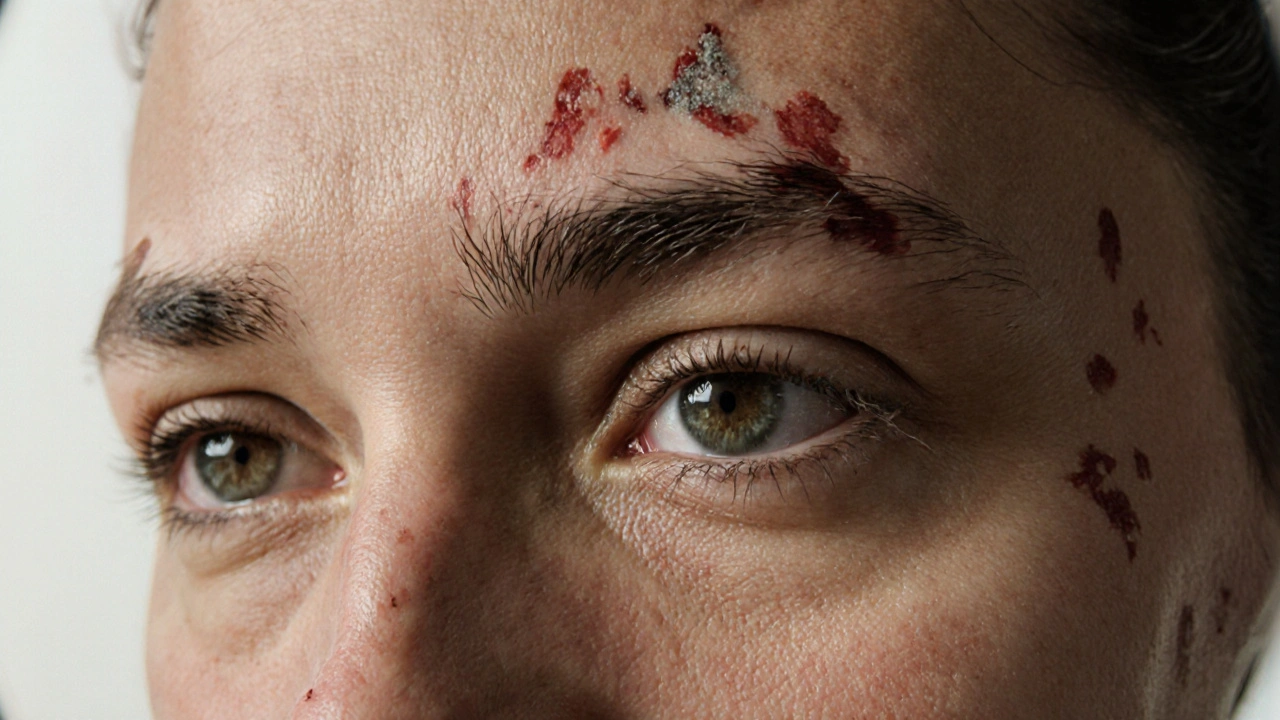
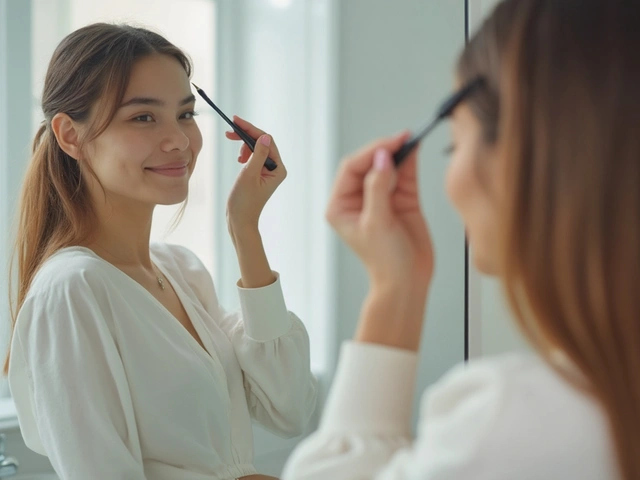


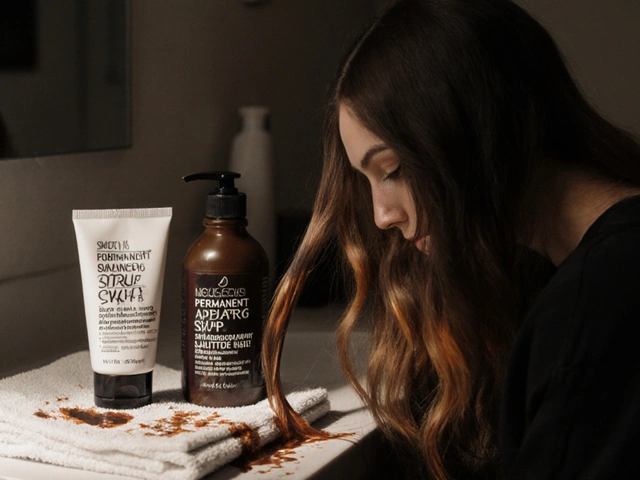
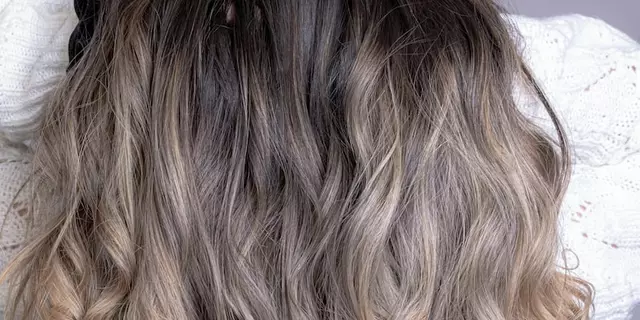
Geet Ramchandani
October 29, 2025 AT 06:59Okay so let me get this straight-you’re telling me I have to wait SIX MONTHS just because I wanted clean, sharp brows? Like, I didn’t even know I was damaging follicles until now. I’ve been plucking since 2018. My left brow looks like a toddler drew it with a broken crayon. And now you’re saying no serums work? That’s it. I’m done. I’m just gonna wear bangs forever. Or maybe a hat. Or a mask. Or all three. I’m not facing the world looking like a confused raccoon.
Pooja Kalra
October 30, 2025 AT 09:59There is a silence in the follicles. A stillness that precedes renewal. You do not force growth. You do not manipulate nature with tweezers and serums and Instagram trends. You surrender. You wait. The brow, like the soul, remembers its shape before the world tried to reshape it. You are not broken. You are in transition. And transition requires no applause. Only stillness.
Sumit SM
October 31, 2025 AT 17:26Wait-so you’re saying that if you tweeze too much, the follicles die? Like, permanently? That’s wild. I thought hair just grew back slower. But if it’s actual cell death? That’s not a beauty issue-that’s a biological catastrophe. And people do this on purpose? To look like a 2015 Pinterest pin? I mean, seriously. We’ve turned our faces into DIY experiments with zero consent from our own biology. And now we’re surprised when the experiment fails? We’re not victims. We’re accomplices.
Jen Deschambeault
October 31, 2025 AT 18:34Just wanted to say-you’re not alone. I overplucked in college and didn’t touch them for 18 months. No serums. No oils. Just stopped. And one day, I looked in the mirror and they were back. Not perfect, but real. And honestly? Better than before. I used to think symmetry was everything. Now I love that they’re a little uneven. It’s mine. Just… be kind to your face. It’s doing its best.
Kayla Ellsworth
November 1, 2025 AT 07:21Oh wow. So the real takeaway is that we’ve been lied to by every influencer who ever said ‘just tweeze a little!’ and ‘this serum works miracles!’ Meanwhile, the real solution is… wait? And eat eggs? And sleep? Groundbreaking. I’m sure the beauty industry will be devastated. Next they’ll tell us sunscreen prevents wrinkles and exercise makes you healthier. What a conspiracy.
Soham Dhruv
November 2, 2025 AT 00:53bro i did this last year after a bad wax and just left em alone. no product no nothing. just stopped touching em. took like 7 months but now theyre fuller than ever. also i started eating more peanut butter and i think that helped. also i stopped rubbing em when i was stressed. weird how simple stuff works huh
Bob Buthune
November 3, 2025 AT 09:53I’ve been crying into my pillow every night because my brows are gone. I can’t even look at myself. I feel like a ghost. I used to be so confident. Now I look like I’m always surprised. I tried castor oil for 3 months. Nothing. I tried microneedling. Nothing. I tried hypnosis. Nothing. I even asked my therapist if this was a metaphor for my life. She said maybe. I don’t know if I can survive another month like this. I miss my brows. I miss me.
Paul Timms
November 4, 2025 AT 10:59Correct. Follicle damage from chronic trauma is irreversible in some cases. The timeline provided is accurate. Serums have marginal efficacy. Nutrition and cessation of trauma are the only proven interventions. Dermatological evaluation is advised after 8 months of no growth. No speculation needed.
Jeroen Post
November 5, 2025 AT 05:41They don’t want you to know this but the government and big beauty are hiding the truth. Brows don’t grow back because they’ve been chemically suppressed by fluoride in the water. The real solution is to stop drinking tap water and start eating raw cacao and sleeping under copper pyramids. I’ve seen it work. The follicles are just waiting for you to break free from the matrix.
Nathaniel Petrovick
November 6, 2025 AT 01:09imagine spending 6 months waiting for your brows to grow back while everyone else just uses a pencil. why not just do that? i mean like the pencil looks fine if you dont go full cartoon fox. and if you wanna feel fancy get a tinted brow gel. its like 8 bucks. why are we making this so hard
Honey Jonson
November 6, 2025 AT 21:16omg yes!! i did this too!! i thought i was doomed but i just stopped plucking and ate more eggs and drank water and like 5 months later they came back kinda lopsided but i love em now. also i started using a spoolie every morning just to brush em up and it feels so good. like self care for your face. you got this!!
Sally McElroy
November 7, 2025 AT 19:29It’s not just about brows. It’s about control. You think you’re choosing your aesthetic-but you’re letting algorithms, influencers, and waxing technicians dictate your identity. You don’t need perfect symmetry. You need self-respect. And yet, you still reach for the tweezers. Why? Because you’ve been taught that your natural form is unacceptable. That’s not a beauty problem. That’s a cultural wound.